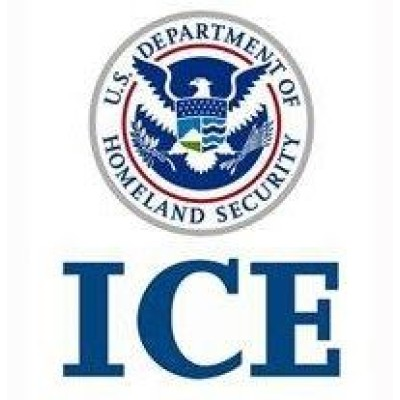Tensions Rise as Federal Agents Storm Communities in Minneapolis and Nashville
June 5, 2025, 9:46 am

Location: United States, District of Columbia, Washington
Employees: 10001+
Founded date: 2003
In recent days, two American cities have become flashpoints in the ongoing debate over immigration enforcement and community safety. Minneapolis and Nashville have witnessed federal operations that have ignited protests, political scrutiny, and deep divisions within their communities. The heavy-handed tactics of federal agents have raised alarms, echoing fears of overreach and community alienation.
On June 3, 2025, Minneapolis found itself at the center of a storm. Federal officers clad in tactical gear descended upon a Latino neighborhood, wielding badges from the FBI and Homeland Security Investigations. An armored vehicle, a stark symbol of state power, rolled into the community, drawing immediate attention and concern. The scene was tense, as bystanders captured the unfolding drama on their phones. The presence of federal agents felt like a dark cloud looming over a tight-knit community already on edge.
Witnesses described the operation as excessive. One local worker noted the presence of multiple vehicles, including a tank. The atmosphere was charged, with community members feeling targeted. Activists voiced their outrage, calling the operation “jackbooted thuggery.” The community, already familiar with the fear of raids, braced itself for the fallout. The message was clear: federal agents were not just enforcing the law; they were sending a signal of dominance.
As the situation escalated, protesters confronted the officers. The clash was palpable. Some community members felt that the show of force was designed to intimidate. The police chief claimed that the local department was merely assisting with crowd control, distancing himself from the immigration enforcement aspect of the operation. Yet, the presence of federal agents, particularly in a community rich with immigrants, raised questions about the true nature of the operation.
Meanwhile, in Nashville, a different but equally contentious scenario unfolded. The city became a battleground over immigration policy as ICE conducted a weeklong operation that resulted in the arrest of 196 individuals. Among them were people with criminal convictions, but the details remained murky. Critics decried the scale of the operation, suggesting it targeted not just criminals but also families and workers going about their daily lives.
Nashville’s mayor, Freddie O’Connell, took a stand against the immigration crackdown. He emphasized that the local police force would not participate in ICE operations, framing the city’s approach as one of inclusivity. His administration sought transparency, requesting information about those arrested and their charges. However, this stance did not shield him from political backlash. Republican lawmakers, sensing an opportunity, launched investigations into his response. They accused him of obstructing federal law enforcement, raising the stakes in an already charged political environment.
The tension in Nashville mirrored that of Minneapolis. In both cities, federal operations sparked protests and calls for accountability. Community members rallied against what they perceived as an invasion of their neighborhoods. The heavy-handed tactics of federal agents felt like a sledgehammer, shattering the fragile trust between law enforcement and the communities they serve.
As the dust settled, the implications of these operations became clear. In Minneapolis, the fear of federal overreach loomed large. Activists warned that such tactics could alienate communities, pushing them further away from law enforcement. The message was simple: when communities feel targeted, they become less likely to cooperate with police. This cycle of mistrust could lead to increased crime and a breakdown of community safety.
In Nashville, the political ramifications were equally significant. The mayor’s efforts to distance the city from ICE operations were met with fierce resistance from Republican lawmakers. The investigation into his actions highlighted the growing divide between local and federal authorities. As Nashville grappled with its identity, the specter of being labeled a “sanctuary city” hung over the administration, complicating its efforts to navigate the complex landscape of immigration policy.
Both cities serve as microcosms of a larger national debate. The clash between federal enforcement and local governance raises fundamental questions about the role of law enforcement in immigrant communities. Are federal agents protectors or aggressors? Do their actions foster safety or fear? These questions resonate deeply, echoing through the streets of Minneapolis and Nashville.
As protests continue and political battles rage, the future remains uncertain. Communities are left to grapple with the fallout of federal operations that have disrupted their lives. The heavy presence of law enforcement may provide a temporary sense of security, but at what cost? The scars of these encounters may linger long after the agents have left.
In the end, the stories of Minneapolis and Nashville are not just about immigration enforcement. They are about community, trust, and the delicate balance between safety and freedom. As these cities navigate the turbulent waters of federal intervention, the voices of their residents will be crucial in shaping the narrative. The question remains: will they be heard?
On June 3, 2025, Minneapolis found itself at the center of a storm. Federal officers clad in tactical gear descended upon a Latino neighborhood, wielding badges from the FBI and Homeland Security Investigations. An armored vehicle, a stark symbol of state power, rolled into the community, drawing immediate attention and concern. The scene was tense, as bystanders captured the unfolding drama on their phones. The presence of federal agents felt like a dark cloud looming over a tight-knit community already on edge.
Witnesses described the operation as excessive. One local worker noted the presence of multiple vehicles, including a tank. The atmosphere was charged, with community members feeling targeted. Activists voiced their outrage, calling the operation “jackbooted thuggery.” The community, already familiar with the fear of raids, braced itself for the fallout. The message was clear: federal agents were not just enforcing the law; they were sending a signal of dominance.
As the situation escalated, protesters confronted the officers. The clash was palpable. Some community members felt that the show of force was designed to intimidate. The police chief claimed that the local department was merely assisting with crowd control, distancing himself from the immigration enforcement aspect of the operation. Yet, the presence of federal agents, particularly in a community rich with immigrants, raised questions about the true nature of the operation.
Meanwhile, in Nashville, a different but equally contentious scenario unfolded. The city became a battleground over immigration policy as ICE conducted a weeklong operation that resulted in the arrest of 196 individuals. Among them were people with criminal convictions, but the details remained murky. Critics decried the scale of the operation, suggesting it targeted not just criminals but also families and workers going about their daily lives.
Nashville’s mayor, Freddie O’Connell, took a stand against the immigration crackdown. He emphasized that the local police force would not participate in ICE operations, framing the city’s approach as one of inclusivity. His administration sought transparency, requesting information about those arrested and their charges. However, this stance did not shield him from political backlash. Republican lawmakers, sensing an opportunity, launched investigations into his response. They accused him of obstructing federal law enforcement, raising the stakes in an already charged political environment.
The tension in Nashville mirrored that of Minneapolis. In both cities, federal operations sparked protests and calls for accountability. Community members rallied against what they perceived as an invasion of their neighborhoods. The heavy-handed tactics of federal agents felt like a sledgehammer, shattering the fragile trust between law enforcement and the communities they serve.
As the dust settled, the implications of these operations became clear. In Minneapolis, the fear of federal overreach loomed large. Activists warned that such tactics could alienate communities, pushing them further away from law enforcement. The message was simple: when communities feel targeted, they become less likely to cooperate with police. This cycle of mistrust could lead to increased crime and a breakdown of community safety.
In Nashville, the political ramifications were equally significant. The mayor’s efforts to distance the city from ICE operations were met with fierce resistance from Republican lawmakers. The investigation into his actions highlighted the growing divide between local and federal authorities. As Nashville grappled with its identity, the specter of being labeled a “sanctuary city” hung over the administration, complicating its efforts to navigate the complex landscape of immigration policy.
Both cities serve as microcosms of a larger national debate. The clash between federal enforcement and local governance raises fundamental questions about the role of law enforcement in immigrant communities. Are federal agents protectors or aggressors? Do their actions foster safety or fear? These questions resonate deeply, echoing through the streets of Minneapolis and Nashville.
As protests continue and political battles rage, the future remains uncertain. Communities are left to grapple with the fallout of federal operations that have disrupted their lives. The heavy presence of law enforcement may provide a temporary sense of security, but at what cost? The scars of these encounters may linger long after the agents have left.
In the end, the stories of Minneapolis and Nashville are not just about immigration enforcement. They are about community, trust, and the delicate balance between safety and freedom. As these cities navigate the turbulent waters of federal intervention, the voices of their residents will be crucial in shaping the narrative. The question remains: will they be heard?
